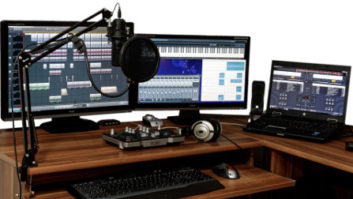The author is membership program director of the National Federation of Community Broadcasters. NFCB commentaries are featured regularly at www.radioworld.com.
The Alliance for Community Media held its annual conference this week. ACM brings together the best and brightest among public, educational and government (PEG) media organizations, much like the National Federation of Community Broadcasters unites community radio. This year, ACM offered a changeup that should get everyone thinking about collaboration, community media’s not-so-secret weapon in the battle for audience.
I was fortunate to get to moderate the conference’s low-power FM workshop, featuring PEG television stations that have decided to get into the business of radio via LPFM.
Community media collaboration is not new at all. If anything, nonprofit journalism now is spurring red-hot interest in this subject. From alternative newsweeklies to USA Today, Newsquest to ProPublica, news organizations are finding partnerships serve many purposes. Collaborating with others helps cut costs. In addition, linking up with fellow travelers can increase local interest in an issue. And finally, such alliances represent an occasion for different groups to forge relationships with other audiences, and grow in the process.

In the case of my ACM panel, most decided as PEGs to get into LPFM as an adjunct to their media efforts. In doing so, they discovered a surge of interest among residents who had heretofore not visited their television studios. For still other organizations, they came to LPFM through strategic local connections. As funding models are changing for PEGs — the franchise fee structure is changing in numerous municipalities, and is in turn affecting PEGs — radio provides a window for growth. There remains much more to be written in this story, but many at ACM were positive about LPFM and community radio in general.
What can your community radio station learn from successful PEGs like this, and the trend of local collaboration?
Before you even begin, it’s good to think about what you want your station to get out of working together with another media group; what your organization brings to the table; and what community radio can financially add in or deliver as in-kind, although in-kind probably has the least value, because the actual worth can sometimes be quite debatable. It is important to have a goal, particular expectations and knowledge that your investment will help your station to be most effective. Those you approach will be grateful you thought this through too.
Your objectives may give you hints as to your potential allies. For example, community radio station KRCL(FM) has become an innovation hub with local podcasters through its Podcast Partners initiative. Milwaukee community radio station WMSE(FM) has paired up with a weekly in town for local coverage. Your station’s own prescription for similar endeavors may vary.
I’ve observed that good collaborations offer something tangible that people can support. Vermont Public Radio just completed a major fundraiser on the promise of new space so VPR to could do more with community groups. If you’re a community radio station, full or low power, it’s good to ask what you’re giving your listeners when you join forces with a local PEG television station, area newsweekly or website. This is also the time to consider asking them to financially contribute to make this work a reality. In my experience, community radio donors are some of the most generous individuals. Like all donors, they want to know their dollars will have impact. Don’t be shy to ask, and to say what their funds make possible.
The most fascinating collaborations tackle problems we’re all concerned about. Consider a recent grant for San Francisco Bay Area station KQED(FM), which is working with PBS NewsHour on a website that addresses misinformation in the headlines. If there’s anything that is the story of the year, it’s fake news. Your listeners are hearing about it on social media, podcasts, television and on your community radio station. Perhaps there’s a big local subject that is underreported or simply crying out for a deeper look: gentrification, property taxes, schools, hospitals or addiction, for instance. The possibilities are endless. Your audience cares about your city. What sorts of collaborations can you forward that kindle that passion?
As groups like ACM and NFCB aid community media in these turbulent times, it’s clear as never before how important teaming up locally is for our space. Our survival may depend on it.












